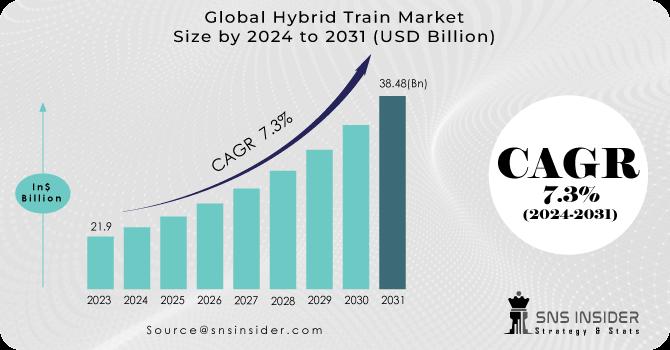Riding the Green Wave: The Booming Global Hybrid Train Market
Key Ideas
- The global hybrid train market is set for substantial growth, fueled by environmental concerns, technological advancements, and government policies focused on reducing emissions and enhancing energy efficiency.
- Key drivers include stringent emission regulations, continuous technological advancements, government investments, and cost savings through operational efficiency.
- Market segmentation includes different propulsion types like Electro-Diesel and Hydrogen-Powered, operating speeds, applications in passenger and freight transport, and regional insights highlighting growth in North America, Europe, and Asia-Pacific.
- Prominent players like Alstom, Siemens, and Bombardier are investing in research and development to introduce advanced hybrid propulsion technologies, while challenges such as high initial costs offer opportunities for expansion into emerging markets and technological integration.
The global hybrid train market is experiencing significant growth, with a market size set to increase from USD 21.9 billion in 2023 to USD 38.48 billion by 2031, driven by a 7.3% CAGR. Key drivers of this growth include environmental concerns and emission regulations prompting the adoption of cleaner and more energy-efficient hybrid trains. Technological advancements in battery technology and hybrid propulsion systems, along with government initiatives and investments in railway infrastructure, further propel the market's expansion.
Market segmentation encompasses different propulsion types such as Electro-Diesel, Hydrogen-Powered, Battery Operated, Gas Powered, and Solar Powered trains, each offering unique benefits. Operating speeds and applications in passenger and freight transport further diversify the market, catering to various transportation needs. Regional insights highlight North America's leadership, Europe's substantial market share driven by environmental policies, and the Asia-Pacific region's rapid growth fueled by urbanization and environmental awareness.
Prominent players like Alstom, Siemens, and Bombardier are actively involved in strategic initiatives to enhance their market position through innovations and partnerships. Alstom's hydrogen-powered Coradia iLint stands out as a groundbreaking advancement in clean energy rail transport. While the market faces challenges like high initial costs and infrastructure limitations, opportunities lie in expanding into emerging markets and integrating technologies like IoT and AI for enhanced efficiency.
Topics
Rail
Environmental Impact
Transportation
Government Initiatives
Innovations
Regional Insights
Market Growth
Market Segmentation
Cost Savings
Latest News
